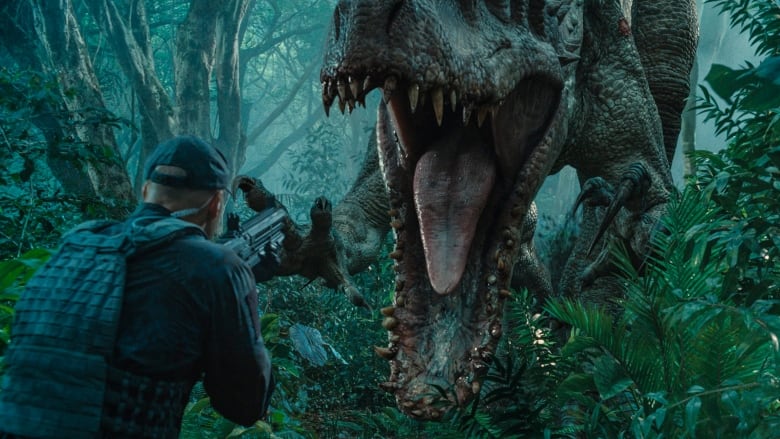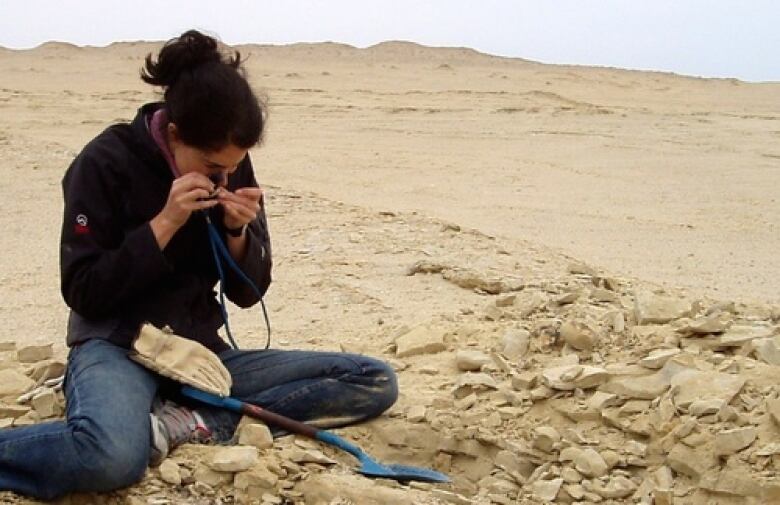Dinosaurs likely didn't roar, new research suggests
Scientists say they might have growled like a crocodile or honked like a goose

What sound did a dinosaur make?
While you might imagine them screeching or roaringlike they did in the Jurassic Park movies, scientists haven't been able to figure out the noises they actually made when they roamed the Earth.
But new research is bringing us closer to understanding how they might have sounded.As CBC Radio science columnist Torah Kachur explains, astudy published in the journal Naturelooks back to the age of dinosaurs tooffersome insightinto the evolution of thevoice box.
If not terrifying roars, then what?
Think more along the lines ofa crocodile or a goose.
Birds and crocodile-like reptiles are the closest living descendants we have to dinosaurs. A 2009 paper published in the journal Historical Biology looked at the different ways those animals make sound.
It pointed out that crocodiles and mammals, for that matter make sound through a vocal organ called a larynx, while birds use a syrinx.
What isa syrinx?
It's a kind of voicebox, butit'sdifferent from the larynx, which is found in many animals, including crocodiles and humans.
"Ourvoicebox, just to kind of contextualize it, is made up of cartilaginoussupport structuresfrom which there are super-squishy soft tissues,what we call vocal folds, that vibrate and produce sound," lead authorJulia Clarke, a paleontologist attheUniversity of Texas atAustin, said.

If we want a sense of what that wouldsound like, we can look to the closest living descendents of the dinosaurs.
"Birds have essentially the same thing, in that they havecartilaginoussupport structures and these super-squishy vocal folds. But where their voice box is located is deep in the chestwhere the windpipe branches into two tubes,if you will, that go to the right and left lung."
How do we know what dinosaurs sounded like?

That's where the latest research comes in. The team behind it found a fossilback in 1992 in Antarctica ofVegavis iaai, a duck and goose ancestorthatlived 66 million years ago,during the time of the dinosaurs.
In 2013, they discovered this fossil has the oldest known representation of a voicebox ever discovered.
From there, the team figured what sound itsanatomy could make.
"The evolutionary relationships of the new species [V. iaai] and the syrinx remains themselves [told us] that this animal would have made sounds most similar to those of living ducks and geese," she said.
It's a combination of evolutionary history and anatomy that allows the researchers to determine just what the avian dinosaurs sounded like.
What does this sayabout the evolution of animal sounds?
There are quite a few implications from this paper.
One is that birds and non-birds evolved similar strategies to make sound, but birds had a headstart of a few million years, if not more.
Second, this fossil does not represent an early stage in evolution of vocalization. In fact, the syrinx discovered was quite sophisticated in terms of anatomy, which suggests some of the more primitive iterations of it still remain to be discovered.
And finally, it tells usthe sounds that dinosaursespecially the carnivorous ones madewere probably very different than most carnivores today.
Ourpresent-day predators, like lions or bears, roar when they attack,so we assume all predators did.But we should be modelling our view of dinosaurs oncrocodilesand birds creatures that mostly use sound to call mates or defend territory.It's more about communication within species.
This research, as well as the whole field of dinosaur sound, is moving towards a very different view than we may have had in our imaginations.












_(720p).jpg)


 OFFICIAL HD MUSIC VIDEO.jpg)
.jpg)



























































































